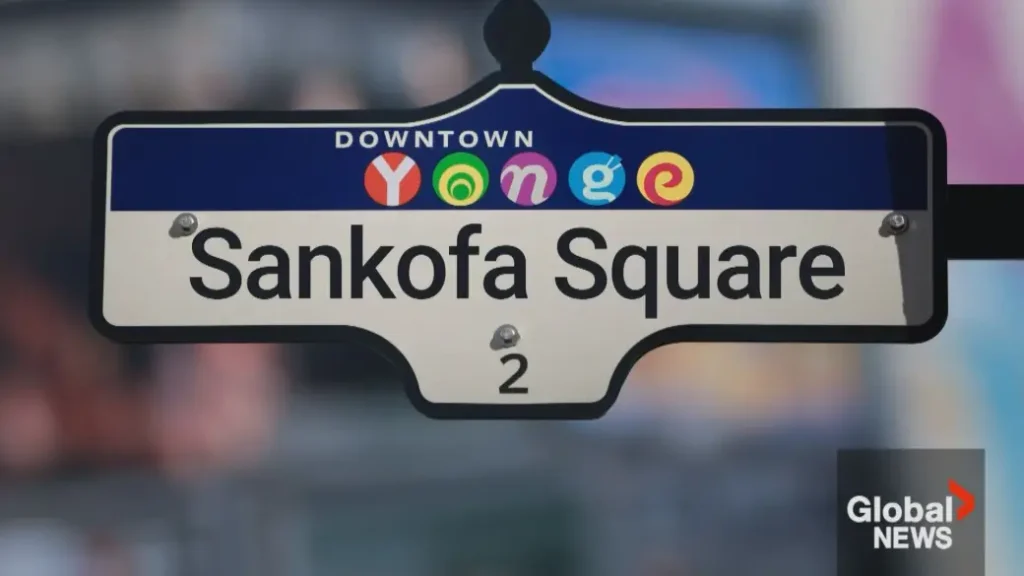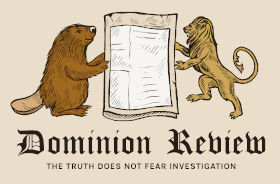In 1965 Canada adopted our current flag, and I really have no complaints about it. It’s iconic, distinctly Canadian, and even gave the world a new term in vexillology, the “Canadian Pale”. The only issue I have with the flag is that it came into existence as a vanity project of Prime Minister Lester B. Pearson.
Pearson had been on a crusade since at least 1960 to replace the de facto Canadian flag at the time, the red ensign. So much so that it became official Liberal policy for the 1963 federal election; it was promised that “within two years of taking office,” a Liberal government would submit a flag design to parliament. They weren’t joking. In June of 1964, Pearson introduced the infamous “Pearson Pennant” design. It was heavily disliked by Pearson’s colleagues in the House of Commons, and a poll conducted by Gallup found that only 48% of Canadians liked the design, with 41% opposed. Pearson heard the criticism, withdrew his design, and decided to delegate the responsibility of selecting a new flag to a parliamentary committee consisting of seven Liberals, five Conservatives, and one member each from the NDP, Social Credit Party, and the Ralliement Créditiste.
Canadians submitted thousands of flags to the committee, and it ended up voting unanimously – perhaps by accident – on October 22nd, 1964 to send the flag designed by George Stanley to the House of Commons for debate. It was chosen out of the three finalists after the variant with the Union Flag and Fleur-De-Lis was eliminated.
A month-and-a-half-long debate over the flag then occurred in the House, with John Diefenbaker’s Conservatives launching a filibuster in a last-ditch effort to avoid the inevitable. A motion of closure was introduced on the advice of French Conservative MP Léon Balcer, and members voted 152-85 to adopt closure, limiting speeches to 20 minutes and forcing a vote on the matter. After an additional 250 or so speeches, on December 15th, 1964, at 2:15 AM, the House voted 163-78 to adopt the flag. On December 17th, the Senate followed suit, voting 38-23 to adopt the flag.
Diefenbaker dubbed the new flag “A flag by closure, imposed by closure”. I can’t help but agree with him. The lack of a public referendum on such an important national symbol, something that the flag committee explicitly denied Canadians, is truly ridiculous.
Obviously, these days almost nobody would vote to change the flag back. But why not finally recognize the red ensign as an official flag of Canada in some capacity? There are other examples of countries adopting more than one national flag. Bolivia has two flags, and Uruguay has three. Numerous countries have altered versions of their national flag – or completely different flags – as their naval jacks, naval ensigns, civil ensigns or state flags. Japan still proudly flies the controversial Rising Sun Flag as its naval ensign, and the Union Jack itself has official status in Canada to this day as the “Royal Union Flag”.
So, why has the Canadian red ensign fallen into such a neglected status, with some even making the outrageous claim that it is somehow a symbol of hate? The Trudeau government even spent $268,400 of taxpayer money on a pamphlet which tells schoolchildren that “Its usage in modern times is an indicator of hate-promoting beliefs”.
This is all nonsense, of course. The red ensign is a proud symbol of our history.
It is the flag that our soldiers fought under in the World Wars and in Korea. The flag saw the signing of the Statute of Westminster, which gave us near full autonomy from the United Kingdom and a distinctly Canadian monarchy. It was our flag during our expansion westward, seeing the admission of more than half of the provinces into Confederation with the exception of the original four. These reasons alone should be enough to make it an official symbol in my eyes.
In what capacity could it be an official flag? Well, I have a couple of ideas. The first would be to just simply make it a sort of alternate national flag of Canada, like the Wiphala in Bolivia referenced earlier. This would probably be the less likely option, but I think it could work.
Another idea would be to make the red ensign the flag of the monarchy of Canada in general. While each individual member of the Canadian Royal Family has their own distinct flag in Canada, no flag represents the entire Royal Family as a whole. I suppose one could argue that the Royal Union Flag is used in that way, but I don’t think that’s accurate, as it symbolizes our membership in the Commonwealth and allegiance to the Crown – but not really the Crown itself.
These are just a couple of ideas – there are probably countless additional ways the flag could be used in an official capacity. One way or another, I would love to see this flag make an official comeback somehow, someday.

All content on this website is copyrighted, and cannot be republished or reproduced without permission.
Share this article!





This is middle school edgelord thinking. Time to retire.
I served in the Canadian military under the Red Ensign and fly it proudly to this day on appropriate dates at my home. To me the Maple Leaf will always be the Liberal flag…and I am most certainly not a Liberal.
I was about 20 then and recall the whole debacle: I believe there was a variant design with blue stripes- and it was more pleasing to most. The imposition of the red was considered by many to make it a rather a Liberal Party flag. The denigration of the Red Ensign is part of their diabolical efforts to destroy Canada. (And I also recall that Pierre Trudeau’s declaration of multiculturalism was received by Canadians with great perplexity. Were we not already a nation of many ethnicities? Our nation is the proverbial frog: Justin has simply turned up the heat. Which has been supercharged by using our tax dollars well into the future to pay his cronies and sycophants).
No, it was not just a vanity project of Pearson, but to get a flag that Quebecers and others would embrace – national unity and to create a stronger sense of Canadian identity not tied to Britain.
I was a kid, but everyone I knew was excited at the new flag… which included people who had served in the war.
Pearson was a great leader – though often indecisive and I put a lot of what he did do down to Walter Gordon, who is under-rated. Diefenbaker was a great orator but erratic leader, yet often doesn’t get credit for things he should get credit for, but he killed the Avro Arrow. Diefenbaker was concerned about Canada being dominated by the US whereas the Liberals were sometimes too quick to embrace continentalism, even though Walter Gordon was the leading economic nationalist but the Liberals also had a lot of people like Mitchell Sharp who opposed him.
From Wikipedia:
https://en.wikipedia.org/wiki/Flag_of_Canada
As new provinces joined the Confederation, their arms were added to the shield. In 1892, the British admiralty approved the use of the Red Ensign for Canadian use at sea.[38]
A Canadian postcard marking the coronation of King George V and Queen Mary in 1911, depicting a Canadian Red Ensign with a crowned composite shield of Canada in the fly, and the Union Flag below it
The composite shield was replaced with the coat of arms of Canada upon its grant in 1921, and in 1924, an Order in Council approved its use for Canadian government buildings abroad.[6] In 1925, Prime Minister William Lyon Mackenzie King established a committee to design a flag to be used at home, but it was dissolved before the final report could be delivered. Despite the failure of the committee to solve the issue, public sentiment in the 1920s was in favour of fixing the flag problem for Canada.[39] New designs were proposed in 1927,[40] 1931,[41] and 1939.[42]
By the Second World War, the Red Ensign was viewed as Canada’s de facto national flag. A joint committee of the Senate and House of Commons was appointed on November 8, 1945, to recommend a national flag to officially adopt. It received 2,409 designs from the public and was addressed by the director of the Historical Section of the Canadian Army, Archer Fortescue Duguid, who pointed out that red and white were Canada’s official colours and there was already an emblem representing the country: three joined maple leaves seen on the escutcheon of the Canadian coat of arms.[38] By May 9 the following year, the committee reported back with a recommendation “that the national flag of Canada should be the Canadian red ensign with a maple leaf in autumn golden colours in a bordered background of white”. The Legislative Assembly of Quebec had urged the committee not to include any of what it deemed as “foreign symbols”, including the Union Flag, and Mackenzie King, then still prime minister, declined to act on the report;[20][37][43] fearing it may lead to political instability. As a result, the Union Flag was kept as a national flag, and the order to fly the Canadian Red Ensign at government buildings was maintained.[44]
https://en.wikipedia.org/wiki/Great_Canadian_flag_debate
William Lyon Mackenzie King tried to adopt a new Canadian national flag in 1925 and 1946,[3] having received a recommendation that came back as a Red Ensign design that replaced the coat of arms of Canada with a gold maple leaf in 1946. However, ongoing fears that the change might lead to political instability resulted in Mackenzie King shelving the project. A compromise was reached where the Canadian government would fly the Canadian Red Ensign as a “distinctive Canadian flag” on government buildings, but maintain the Union Jack as the national flag.[3]
In 1958, an extensive poll was taken of the attitudes that adult Canadians held toward the flag. Of those who expressed opinions, over 80 per cent wanted a national flag entirely different from that of any other nation, and 60 per cent wanted their flag to bear the maple leaf.[4] In April 1963, an opinion poll of 2,262 Canadians found that 52% supported a new national flag for Canada of its own, while 30% preferred using the Union Jack and 18% preferred using the Canadian Red Ensign. There was sharp division, however, between linguistic groups in their preferences. Whereas 90% of Francophones preferred a new national flag, only 35% of Anglophones desired this. Combined, the Union Jack and Red Ensign commanded the support of 65% of English Canadians.[5]
From his office as leader of the opposition, Lester Pearson issued a press release on January 27, 1960, in which he summarized the problem and presented his suggestion as:
… Canadian Government taking full responsibility as soon as possible for finding a solution to the flag problem, by submitting to Parliament a measure which, if accepted by the representatives of the people in Parliament, would, I hope, settle the problem.
The Progressive Conservative government of the time, headed by Prime Minister John Diefenbaker, did not accept the invitation to establish a new Canadian flag, so Pearson made it Liberal Party policy in 1961, and part of the party’s election platform in the 1962 and 1963 federal elections. During the election campaign of 1963, Pearson promised that Canada would have a new flag within two years of his election. No previous party leader had ever gone as far as Pearson did, by putting a time limit on finding a new national flag for Canada. The 1963 election brought the Liberals back to power, but with a minority government. In February 1964, a three-leaf design was leaked to the press.
The Ensign should replace the current flag. Maple leaf? That’s an eastern tree! The Ensign flag would be more inclusive of the country as a whole.